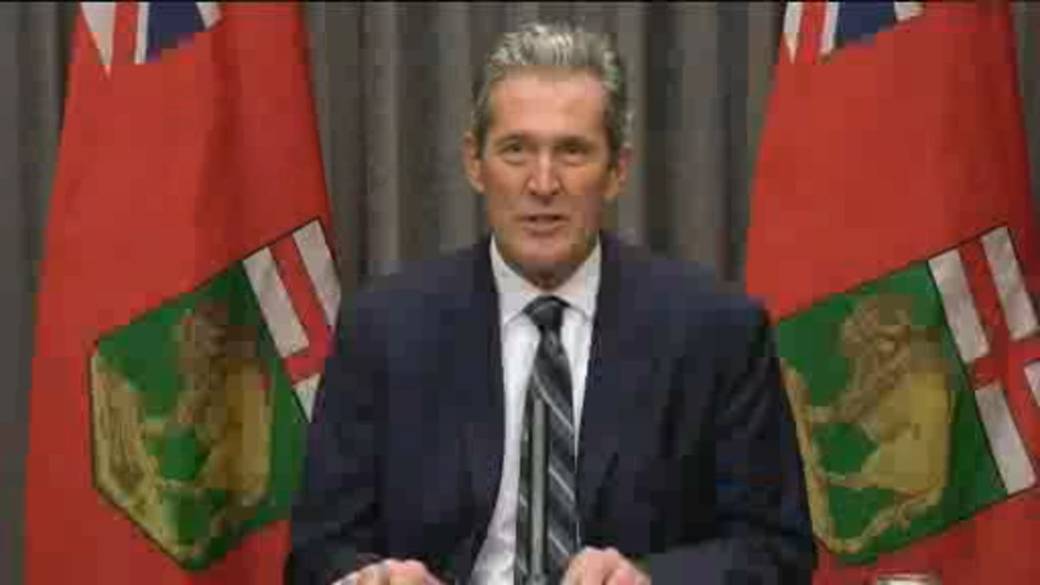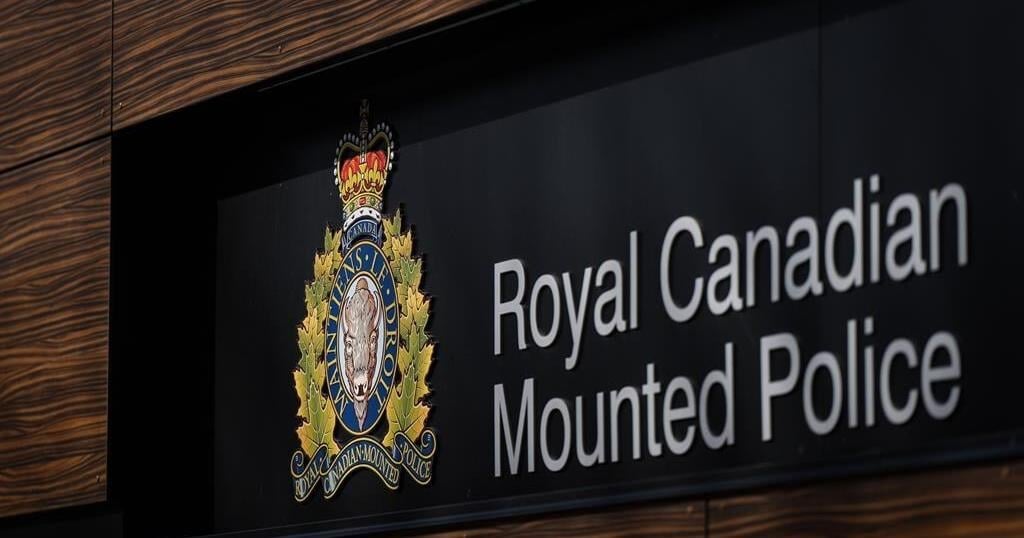Five months ago, when novel coronavirus first erupted in China, the federal government assured Canadians that their chances of catching COVID-19 were low.
Since then, tens of thousands of cases have been diagnosed and the pandemic has affected nearly all aspects of daily life, in Canada and around the world.
The government says it’s emphasizing speed over perfection in its economic response. Aid packages worth billions of dollars, such as the Canada Emergency Response Benefit, were developed and distributed in a matter of weeks. Canadian borders, however, were only closed in March, and provinces across the country are scrambling to deal with personal protective equipment shortages and devastating outbreaks at long-term care facilities.
By Saturday, May 2, there were 55,572 confirmed cases in Canada and over 3,400 people have died as a result of the virus.
So, what happens next time?
Dr. Leon Rivlin, chief and medical director of emergency medicine at the Humber River Hospital in Toronto, told Global News that Canada may not see the same spike or volume of patients as New York — the global epicentre of the virus — but could eventually end up with similarly high numbers of patients over a prolonged period of time.
“We’ve flattened the curve,” he said. “But the area under the curve will change.”
Once federal restrictions ease and stores reopen, Rivlin said many of the precautions Canadians are taking right now, possibly including the use of masks, hand sanitizer and goggles, will continue on as normalized parts of everyday life.
Craig Janes, director of the School of Public Health and Health Systems at the University of Waterloo (UOW), said how the government invests in its health-care system in the future will play a pivotal role in its preparation for the next pandemic.
“The public health system is your first line of defence… the hospitals are your last line of defence,” he said.
Several mistakes were made, Janes said. He told Global News that prior to the outbreak boosting Canada’s national stockpile of personal protective equipment (PPE) was “not a top priority,” leaving provinces to scramble to protect their frontline healthcare workers.
Provincial public health organizations have also been routinely subject to cuts and constraints.
Under Ontario Premier Doug Ford’s leadership, for example, municipalities in Ontario were made responsible for 30 per cent of public health funding as of Jan. 1. Thirty-five public health units were merged into 10, and $200 million was cut from their budgets.
Janes said cuts like those “probably put us in a poor state with this pandemic.”
Reza Afshari, an environmental health epidemiologist the University of British Columbia (UBC), added even once the pandemic is brought under control, there’s a good chance Canada will undergo a second and potentially third wave of the virus in November, as colder weather facilitates the spread of disease.
It could also become endemic — recurring periodically but constantly maintained at a base level — like chickenpox. To combat this, he said Canada needs to begin developing the next version of the guidelines for the prevention, diagnosis and treatment of COVID-19.
As air and regional travel expand, Tom Koch, a medical geographer at UBC, said the likelihood the virus will be carried through a broader population will increase.
Human beings create the conditions in which viruses thrive, carrying them from one place to another. That’s what Koch, who authored Disease Maps: Epidemics on the Ground, called “a fact of life.”
“Bacteria and viruses — which we are forced into — evolve and slap us upside the head. We come to this thinking that our genomics and that our science will offer an answer each time,” he said.
“The first thing we have to do as this pandemic eases is understand — in a very important way — it will not be over.”
Coming out of this pandemic, he said some of those unlucky enough to have been infected will require medium-term respiratory therapies, although “almost every epidemic has left us with a class of patients with unexpected complications that require continued care.”
As Canada seeks a return to new normals, Koch said the federal government will need a plan to ensure the continued care of those who will have complications, some of whom may need long-term care.
“We may have very good disaster plans, but then a recession happens or other priorities emerge and public health is lost in the shuffle,” he said. “We can’t do that if we wish to be prepared for the next [outbeak] and to keep the citizenry as healthy as possible.”
Koch added many of those Canadians will be elderly living in nursing homes and other long-term care facilities, who account for almost 80 per cent of all COVID-19-related deaths in the country.
Ken Denike, another medical geographer at the university, said, “it’s pretty clear there was no plan” for long-term care facilities with dependencies on caregivers.
“There’s a threshold of population getting the disease, getting the virus at the beginning, which spreads fairly quickly,” he said.
Koch said reorganizing these institutions for chronic conditions into the public health care system could save lives.
“In many of these institutions are personal care workers who are among the least trained, least well-paid and most dedicated of staffers and long-term care,” he said.
“They need more training, more pay, and they need to be seen as critical members of the care cycle that we provide for all Canadians.”
To the federal government’s credit, many medical experts interviewed by Global News said Canada has been doing well, especially when compared with other countries.
The Canadian government was quick to announce they were adapting their Influenza pandemic preparedness policy to deal with COVID-19 in February, and recent federal modelling confirmed Canadian infection doubling rates are down.
Data collected by Global News from federal and provincial public health organizations across Canada shows that the country’s curve is indeed flattening.
Last week, chief public health officer Theresa Tam told reporters during a briefing that was in large part due to social distancing measures, which were implemented by the government in March.
“We’re seeing federal policy adapt to keep up with emerging knowledge of this pandemic. And I think that was great,” said Dr. Isaac Bogoch, an infectious disease specialist with Toronto’s University Health Network.
On a provincial level though, Bogoch said there was room for improvement.
Western provinces were initially conducting more tests than others with denser populations like Ontario, which eventually ramped up its testing numbers to roughly 16,000 per day in April.
Should another pandemic occur, Bogoch said Canada needs to be prepared to test citizens in large quantities, which means more assessment centres and more testing sites.
“The country could still expand and still might need to expand other diagnostic testing as we move into the next phase of the pandemic,” Bogoch said.
Kelly Grindrod, a professor in the School of Pharmacy at UOW, said the federal government’s clear markers also helped.
“We have very good national public messaging. We’ve seen a lot of the public health officials speaking to us daily,” she said.
But from a planning perspective, Grindrod said she was at odds with the government’s failure to consider the importance of pharmacies during a pandemic.
Pharmacies across the country have been deemed an essential service, but many are still without proper personal protective equipment like masks or gloves, even having to set up plexiglass themselves to prevent the spread of COVID-19.
Following the initial outbreak, Grindrod said many Canadians turned to pharmacies first, hoping to get tested.
Canadians get their flu shots and naloxone kits from pharmacies, but more recently staff are also screening patients for COVID-19 at the door, coming in close contact with patients who may be infected. Based on this, Grindrod said pharmacies need to qualify as public health providers.
“So much got shunted to the pharmacies,” she said.
“Pharmacies weren’t considered as part of the health-care system. They’re almost considered like a business without realizing that when you close many of the family doctor clinics, family doctors still provide services via telemedicine, but they’re not open necessarily for walk-ins and their patients don’t know how to track them down.”
Shelita Dattani, with the Canadian Pharmacists Association, said conservatively, between 60,000 and 70,000 masks are needed per day to supply the 10,000 pharmacies across the country with adequate amounts of PPE — something that needs to be accounted for moving forward.
“We recommend about eight hours per mask per person per day at a community pharmacy. Let’s say you just assume very conservatively that you have about five to seven staff per day in a pharmacy. It would be like 40 to 60 masks per day,” said Dattani, who acts as the association’s director of practice development and knowledge translation.
“As we look into the next round of pandemic planning — because this will happen again — we know that we really need to consider the pharmacies as one of the frontline public health providers to the public, as opposed to just focusing on those really high-risk people in the ICU,” she said.
As Canadian factories retool to supply gowns and masks to these front lines, there has been growing support to manufacture PPE locally. Ottawa is currently leading the national bulk purchasing effort for PPE, and the federal government said thousands of companies — previously shuttered by the novel coronavirus — have reached out, offering to make PPE if it means staying in business.
Another company, Bio-ID Diagnostics, has even created a new, more efficient way to test for the virus.
Koch said Canada cannot rely on private markets to deliver all the things the country needs in order to respond to these pandemics.
Stockpiling various resources, for example, or ensuring that Canada has domestic supply chains set up independent from other countries by actively investing in those companies, will be crucial the next time around, he said.
“We can easily shift and create our own supply chains,” said Koch.
“After this pandemic, will they switch back to the old [way] or will we begin to use this to create our own health infrastructure, which will support us not simply in an epidemic, but assure us that in normal times that we have a supply mechanism which is Canada-based rather than international?”
Bogoch added federal and provincial governments need to get on the same page. He said some provinces planned ahead, but those that didn’t have foresight experienced challenges.
“It’s clear we need better coordination,” he said.
Provinces like Alberta have a centralized approach to purchasing PPE, which allows them to buy it in bulk at a lower cost. The result was a surplus of PPE that the province is now sharing with the rest of the country.
Other provinces haven’t been as lucky.
Quebec, the epicentre of Canada’s COVID-19 outbreak, appealed to the federal government for more PPE while other provinces were forced to consider alternative supply sources after U.S. President Donald Trump ordered N95 masks to stop flowing into Canada — an order he has since backtracked on.
“We’re seeing in many jurisdictions rationing of personal protective equipment and hospitals scrambling to navigate broken supply chains to ensure that they have access to the essential personal protective equipment,” Bogoch said.
“Anything that you would need to boost your laboratory capacity, including having the right reagents, having the right swabs, having the right technology in-house, are essential.”
Sources: Globalnews.ca
Source link
Edited by Harry Miller
Related
































